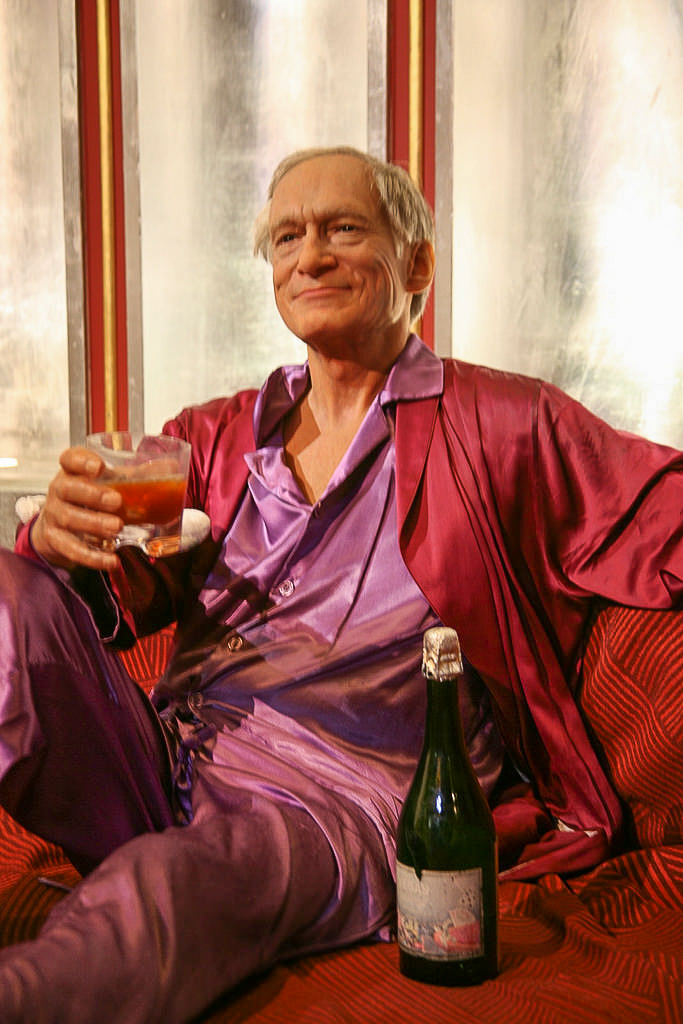Sabrina Bui
Staff Writer
Hugh Hefner is nearly synonymous with Playboy, the controversial magazine that has been a comfort for army service people and lonely souls alike. However, Hefner solidified a legacy that goes beyond the provocative. He was also an advocate for freedom of expression and civil rights, something the documentary “Hugh Hefner’s After Dark: Speaking Out in America” seeks to highlight.
The film was part of a free viewing at the Lobrero Theatre last Thursday for its run at the Santa Barbara International Film Festival (SBIFF). It was produced by Brigitte Berman, an Academy Award-winning director, and her late husband Victor Solnicki, a pioneer of Canadian cinema. The film focuses on a different side of the Playboy founder. It hones in on his political activism during the 50s and 60s, a part of his legacy that many are unaware of today.
“He’s known for being Mr. Playboy and all that goes with that,” Berman said in an interview with The Bottom Line. “But that’s only one side of him and I was very fortunate to get to know another side. I got to know, along with my husband, a very, very bright man who was aware of everything going on around the world.”
The 101-minute documentary showcases clips from his successful talk shows “Playboy’s Penthouse” (1959-1961) and “Playboy After Dark” (1969-1970). It also features commentary about Hefner’s life and work from stars who knew him, such as legendary musician Smokey Robinson and Emmy Award-winning actress Whoopi Goldberg.
According to the documentary, Hefner was not afraid to push boundaries, particularly in the realm of civil rights. The tumultuous social and political climate of mid-century America was an important driver for the documentary as Berman wanted to highlight Hefner’s political work in the era.
“The reason he did those shows was because things were going on in America politically and socially that he did not approve of,” Berman said. “He wanted to have activists and people who were not allowed to speak on television and give them a place where they could speak out.”
The documentary highlights Hefner’s pushback on the strict television regulations in regard to interracial performances and the House of Unamerican Activities, as well as his staunch support for the civil rights movement.
Hefner’s television shows went against the grain of conservative 50s and 60s American values. The documentary made sure to show his resistance by using clips of black and white musicians performing together, interviews with artists and individuals who had their content banned in other forms of mainstream media, and satires of American politics and politicians.
If audiences are expecting to see more about Hefner’s work with the sexual revolution and Playboy, they won’t find much in “Hugh Hefner’s After Dark.” But the omission wasn’t Berman’s choice; it was Hefner’s. His self-produced shows displayed his devotion to giving a platform to the marginalized better than anyone.
Even so, Berman has acknowledged that Hefner’s reputation as a sexual provocateur has affected the way the documentary is initially perceived in the post “me too” era.
“In the ‘me too’ era, not every festival wants to invite it,” Berman said. “‘Me too’ and Hefner don’t seem to get along on the surface.”
But, the interesting part about the documentary is that the intention is not to convince anyone otherwise about Hefner, according to Berman.
“What I would like is that people understand a little bit more about who he was,” she said. “I don’t want to change anybody’s mind. But don’t just see one side, take a look at the other side as well. You might be surprised.”
Ultimately, the documentary is an effort to show a more nuanced view of man whose legacy has often been reduced down to womanizing.
“People are complex and a man like Hugh Hefner is extremely complex,” Berman said. “You can’t just throw the baby out with the bathwater. You miss a great deal.”
The Santa Barbara International Film Festival is not the documentary’s first rendezvous. It has toured around the world before its stint at SBIFF with much success. In Santa Barbara, it was no different. The nearly full theater for the Thursday screening gave the film an enthusiastic round of applause at its conclusion.
Berman’s documentary is a look inside the life of man who has predicated his legacy on controversy, and whose work has been met with a critical eye in contemporary times. Hefner in the film exemplifies how the truth lacks simplicity.
Hefner said in a 1967 Look magazine interview about the creation of the iconic Playboy logo, “The rabbit, the bunny, in America has a sexual meaning; and I chose it because it’s a fresh animal, shy, vivacious, jumping — sexy.”
He took the American perception of the rabbit and saw another side to it, much like Berman took Hugh Hefner and gave audiences the chance to see a different part of him in “Hugh Hefner’s After Dark.”











